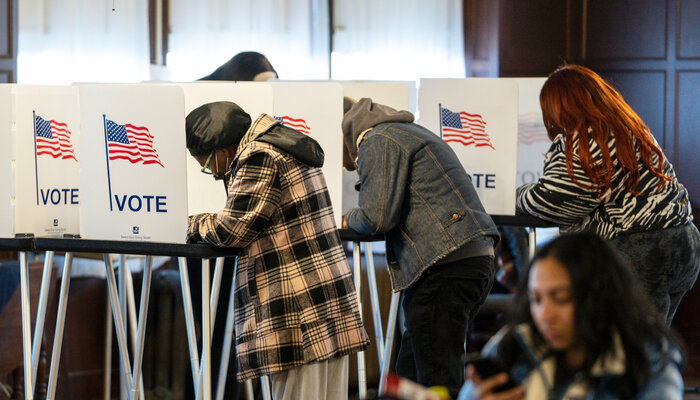As state-by-state turnout data becomes available after the midterms, it’s clear that we remain in a period of high voter participation. Current estimates from the U.S. Elections Project suggest that turnout in the 2022 election was just a few percentage points shy of 2018, when turnout was the highest it had been in any midterm election in the past century.
Still, it’s important to remember that high turnout is not equally shared by all voters. Nonwhite turnout has been consistently lower than white turnout, and the racial turnout gap has widened in jurisdictions previously covered by the Voting Rights Act since the Supreme Court gutted the preclearance condition in 2013.
While most states have not yet provided their official 2022 voter file data with Election Day returns, Georgia has already published this data. Turnout in Georgia is especially worthy of examination, considering that its newly enacted Senate Bill 202 erected multiple barriers to voting in the state.
A Brennan Center analysis already revealed that the gap in turnout between white and Black voters in Georgia’s 2022 primaries was the highest it had been since at least 2014. While Georgia saw similar turnout numbers in November compared to the 2018 midterms, our new analysis shows that these racial turnout gaps persisted. In fact, although overall turnout didn’t change much from 2018, this high-level statistic obscures the fact that white turnout went up while nonwhite turnout went down, cancelling one another out, as the figure below makes clear. (See the bottom of this post for a note on data and methods.)
White turnout was 8.6 percentage points higher than nonwhite turnout in the midterm election this year — higher than any general election in the past decade, and roughly 50 percent higher than in the last two midterms.
This gap was driven largely by a much wider gap between white and Black voters this year. This gap was also higher than any point in the past decade — and roughly double the gap observed in 2014 and 2018.
To put these percentages into perspective, if nonwhite voters had turned out to vote at the same rate as white voters in this year’s midterms, they’d have cast over 267,000 additional ballots. Most of these ballots (about 176,000) would’ve been cast by Black voters. These “missing ballots” dwarf the count that Sen. Raphael Warnock would have needed to avoid the December runoff (43,690).
Several factors affect turnout, including poll site resources and weather, among others, so we cannot say whether the passage of S.B. 202 is the cause of the turnout gaps’ growth. However, the law has been challenged in multiple lawsuits — including one filed by the U.S. Department of Justice —alleging that it is racially discriminatory. And it is likely that some of the law’s provisions disproportionately discouraged or prevented voters of color from turning out, such as limiting mail-in voting and drop box usage.
While high turnout should be celebrated, it is not an indication that restrictive voting laws are harmless. High-level turnout numbers can be especially pernicious when they mask turnout rates moving in opposite directions for white and nonwhite voters.
Data and Methods
To estimate the racial turnout rate in each election, we leverage snapshots from L2 following the general elections. These are dated 5/16/2015, 1/27/2017, 12/22/2018, 2/4/2021, and 11/20/2022.
Voters in Georgia self-report their race, which L2 incorporates along with other data into their models of voters’ races in their snapshots. For individuals whose race is not reported by L2, we run fBISG at the block-level. For the 2014 election, we use fBISG with 2010 census data; for the other elections, we use fBISG with 2020 census data. We sum the predicted probabilities to determine the number of ballots cast by voters of each race/ethnicity. In each year, the denominator is taken from 5-year ACS estimates of the citizen voting age population (CVAP). In 2022, we use 2020 CVAP estimates, as that is the latest year available.
NOTE: In a previous iteration of our methodology section we were not clear about the provenance of voters’ races in the L2 file and that the racial categorizations of voters were the product of L2’s models. When we use only voters’ raw self-reported race (and fBISG for “others” and “unknowns”), and not L2’s modeled racial data, the numbers point in the same direction: white turnout increased relative to 2018, while nonwhite turnout decreased between 2018 and 2022.







